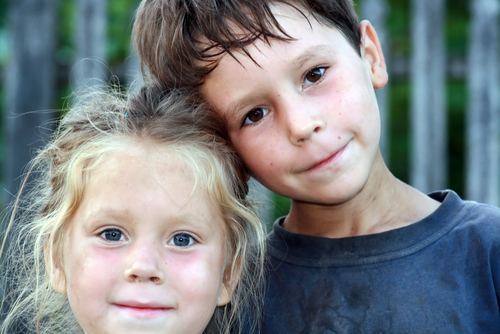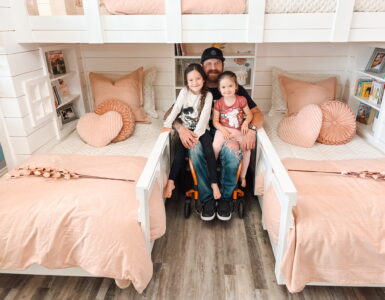Many kids struggle with speech and language issues that can interfere with a
child’s overall development. But there are simple steps parents can do to
help children improve their speech early on.
Licensed Speech Therapist Libbi Malmborg shares tips to encourage early
speech and language development.
Typical Errors:
Articulation errors can be categorized as speech sound omissions (i.e.
omitting the /s/ in house), substitutions (i.e. substituting one sound for
another as in “wamp” for the word “lamp”), or distortions (i.e. the sound is
approximated, but not closely enough to be considered normal production).
Children make predictable pronunciation errors (not really ‘errors’ at all,
when you stop to think about it) when they are learning to talk like adults. I
know that most kids are going to call me “yibby” or “wibby.”I only worry
about these particular examples when children are 4 or 5. These ‘errors’ are
called phonological processes, or phonological deviations. (Examples) Some
of these include:
Stopping: Fricative or affricate replaced by a stop (3;0-5;0)
voiceless sound is replaced by a voiced sound (3;0)
pig è big kiss ègiss tenè den
final voiced consonant in a word is replaced by a voiceless one (3;0)
redèret, bag èback
back (velar) sounds replaced by forward (alveolar stop, nasal) forward (3;6)
kissètiss, giveèdive
palatal-alveolar fricatives (sh, zh) are replaced by alveolar fricative (s,z)
shipèsip
final consonant in the word is omitted (3;3)
houseèhow
consonant harmony: pronunciation of the whole word is influenced by the
presence of a particular sound in the word (4;0)
cupboardèpubud
weak syllable deletion (4;0)
againègen, tidyingètying
cluster reduction omission (4;0)
spinèpin, antèat
Gliding (5;0)
lightèwhite, redèwed
Atypical errors:
Glottal replacement
Initial consonant deletion
Backing
Widespread or inconsistent vowel errors
Persistant FCD (beyond 2;10)
PCC <50 in beginning readers
Speech difficulties >6;9
When to intervene – so much variation in the rates of development.
Researchers have and continue to look for ways to determine in early infancy,
which children are at risk for developing problems later on.
Traditional: Failure to babble or late onset of canonical babbling; Small
Phonetic Inventory; Hx of middle ear (OME) between 12-18 months; Error
Types (see above); Accompanying language concerns (vocabulary, intent,
participation); Language milestones, family history.
When you as a parent are concerned:
Rely on your own judgment. If you
think
your child has a problem in the area of communication skills don’t hesitate to
seek proper professional help. Don’t be diverted by well-meaning people
who are overly reassuring. Remember, you are the best expert on your own
child’s development and progress. Early identification of communication
difficulties in children can prevent other problems developing, such as
difficult behavior, learning difficulties (especially with reading and spelling)
and problems relating to and getting along with other people. You might be
advised by a kindly friend, relative or “non-SLP” professional that your child
is too young for an assessment or to “Leave it for six months” (before
seeking an assessment). This may not be appropriate advice. Most parents
know instinctively if all is not well with their own child’s development! Trust
your instincts.
As early as you can:
Children with phonological impairments do not necessarily go on to
experience literacy problems, but children who still have phonological
disability in the form of speech errors (especially those at the severe end of
the scale) when they start school, are very much at risk for difficulties
learning to read and spell. This is one reason for wanting to treat them early,
at three or four years of age.
The other main reasons for treating children with phonological disorders
early are that it can be frustrating, socially isolating, detrimental to self-
esteem and confidence, and unpleasant generally, to have speech that is
difficult to understand compared with the majority of children of similar age.
Help ease the burden of our public schools with regards to remediating
communication disorders.
Hesitate before accepting the wait and see approach, time is too important.
A few easy ways to encourage early Speech and Language Development:
o There is no way to teach a sound/intervene that works for every child.
We must individualize and use what child brings to the table. The sounds in a
word that come before and after a particular speech sound can influence the
production of that sound. This is certainly true of /r/ and /l/. Frequently, a
child can say the sounds in isolation and maybe initially in some words but
experience difficulty in other word positions or conversation. Probe different
words to determine where child can produce the sound and where to begin.
o Multisensory approaches: hear, feel, touch, experience sounds
o Auditory feedback(child records and listens to self, microphones, pvc
pipe)
o Visual Feedback (mirrors & airflow): /th/, /f/, /b/, /p/, /m/, /w/ are
highly visible; voiceless sounds: /p/, /t/, /k/, create an airflow that can be
seen and felt
o Tactile/Touch cues
o Label sounds for child according to placement and manner: windy,
popping, biting, etc.
o As speech develops, if a child says something unclearly it is good
practice to repeat the word back as it should sound (modeling, recasting –
examples***) Very powerful tool.
o Auditory input (aka bombardment) – multiple repetitions of a particular
sound target, spoken by the adult, without requiring the child to say
anything. The focus is on listening to rather than producing target.
o Phonological discrimination (sound sorts)
Oral Motor Exam completed to determine whether the muscles of the mouth
are working correctly & HEARING SCREENING!
Resources:
www.ASHA.org
http://www.utahbabywatch.org/
http://www.utahparentcenter.org
/
http://www.babycenter.com/big-kid
http://www.speechforkids.com/
http://www.apraxia-
kids.org/
University of Utah Speech, Language, and Hearing Clinic
a href=”http://www.health.utah.edu/csd/clinical/SLHC.html
To find out more, contact Libbi directly.
Children’s Synergistic Leaning Collaborative (SLC)
www.childrens-slc.org
801.810.9145
The Children’s SLC was founded in 2011. Libbi has worked in residential and
day treatment, private and public schools and also worked privately for
children and their families.















Add comment